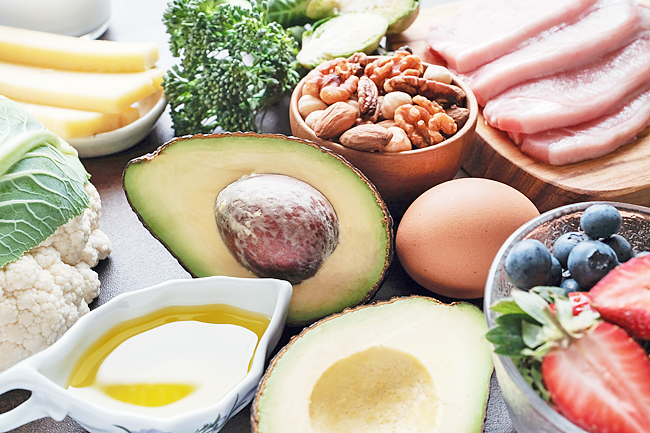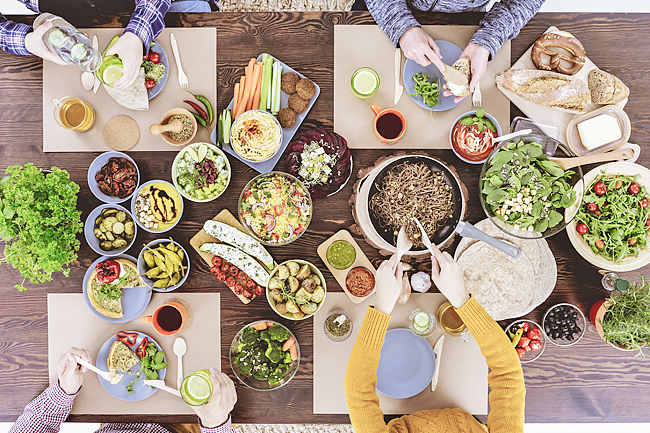Anahad O’Connor
THE WASHINGTON POST – For many people, figuring out the best diet for optimal health isn’t easy.
But studies show that almost anyone can lose weight and improve their health by making one simple change to their diet.
The trick: Cut out processed carbs and replace them with high-quality carbs. These include fruits, vegetables, beans, lentils, quinoa and whole grains like brown rice, barley, farro and steel-cut oats.
According to a large and growing body of research, this one swap could help you lower your risk of cancer and Type 2 diabetes, reduce your likelihood of dying from heart disease or a stroke and help you shed pounds without counting calories.
While it sounds simple, for many people it will be a big change. These high-quality carbs make up just nine per cent of all the calories that Americans consume.
For most people, processed, low-quality carbs are dietary staples.
They make up 42 per cent of all the calories that Americans consume. They include the packaged food that dominate many supermarket shelves and household dinner tables, like white bread, pastries, pasta, bagels, chips, crackers and food with added sugars, such as breakfast cereals, flavoured yoghurts, desserts, juices and soft drinks.


WHAT HAPPENS WHEN YOU SWAP OUT PROCESSED CARBS FOR HIGH-QUALITY CARBS?
Studies show that the fibre in these food has multiple benefits.
It promotes satiety, which helps you feel full. It nourishes the microbes that make up your gut microbiome, which can lower inflammation and protect against chronic diseases. And it improves your blood sugar control and cholesterol levels.
A large meta-analysis in the Lancet examined the health effects of eating different types of carbs.
The analysis, based on data collected from 4,635 people in 58 clinical trials, showed that adults who ate the highest levels of whole grains, vegetables and other fibre-rich carbs had a 15-to-31-per-cent reduction in diabetes, colorectal cancer and their risk of dying from a stroke or heart disease compared to people who ate the lowest amounts of these food.
They also lost more weight – “despite not being told to eat less food or do more physical activity”, said nutrition epidemiologist at Otago Medical School and co-author of the research Andrew Reynolds.
WHY ARE PROCESSED CARBS SO BAD FOR YOU?
On average, Americans eat five servings a day of food with refined grains, like white bread and pasta, and just one serving a day of food that are whole grain, like brown rice and barley, said nutrition epidemiologist at the Friedman School of Nutrition Science & Policy at Tufts University and author of a study in JAMA Fang Fang Zhang that examined the types of carbs and macronutrients that Americans consume.
In her research, Zhang found that Americans have been cutting back on their intake of sugary sodas and other food with added sugar, thanks to growing public awareness about the damaging health effects of sugar.
But at the same time, we’ve been eating more and more food with refined grains, in part because they are so ubiquitous.
“We are seeing an overall trend toward increased consumption of refined grains,” said Zhang. “With refined grains we are missing our target.”
These food have been stripped of their fibre, vitamins and minerals and industrially converted into flour and sugar. This causes them to be rapidly absorbed by the body, prompting blood sugar and insulin levels to spike and activating reward regions in the brain, all of which can lead to cravings, overeating and a cascade of metabolic changes that lead to poor health.
Healthy carbs are those that haven’t been highly processed and stripped of their natural fibre.
Fruits, vegetables, beans and whole grains are fibre-rich and full of health-promoting nutrients that help protect against heart disease and other leading causes of death.
HERE’S HOW TO SWAP YOUR CARBS
If your goal is to lose weight and improve your metabolic health, you don’t need to count calories or go on a restrictive diet. Just start by cutting the empty carbs from your diet.
Here’s how to do it:
Cut the white food
Cut back on food like cereal, pastries, white bread, white pasta, juices, sweetened beverages and other food with added sugar.
Add healthy carbs
It’s simple. Eat more vegetables, whole grains, beans and lentils.
Add healthy fats and protein
After getting rid of those empty carbs, some people find that they feel better replacing them with food higher in fat and protein, like nuts, seeds, avocado, eggs, poultry, yogurt and seafood.
Add healthy grains
Try replacing white and highly-processed carbs with whole grains, whole wheat breads, beans, peas, lentils, legumes, quinoa, fruits, vegetables and other unrefined carbs.
Add higher quality ‘nutrient dense’ food back into your diet
These food carry different labels that can help you identify them. Look for descriptors like “minimally processed”, “seasonal”, “grass-fed”, “whole grain” and “pasture-raised”.
It may be tough at first to cut back on some of your favourite refined carbs, but you won’t feel as hungry if you replace them with fibre-rich carbs and healthy fats.
WHY THE QUALITY OF YOUR CARBS MATTERS
In one randomised trial that was published in JAMA, overweight people who were counselled to cut back on added sugar, refined grains and highly processed food for a year lost weight – without counting calories – and showed improvements in their blood sugar and blood pressure levels.
This approach worked whether people followed a diet that was relatively low in fat or relatively low in carbs.
The findings showed that for weight loss, diet quality trumped diet quantity, said Director of Nutrition Studies at the Stanford Prevention Research Center Christopher Gardner, who has studied the effects of different diets on metabolic health and weight loss.
If you want to eat a healthier diet, your first step, he said, should be “to get rid of the empty carb calories that just come with glucose and no fibre, vitamins or minerals”.
He recommends replacing those food with what he calls a “foundational diet” rich in plant food that are eaten by cultures around the world, like beans, nuts, seeds and vegetables.
In Latin American cuisine, red, black and pinto beans are staples. In the Middle East, people have been using chickpeas and sesame seeds to make hummus and other dishes for centuries. In India, red and yellow lentils can be found in delicious dal, soups and stews.
And in the Mediterranean, many dishes incorporate things like fava beans, cannellini beans and split peas.
“Americans eat a shockingly low number of beans, nuts and seeds,” he said. “We should eat more like these other cultures around the world.”






